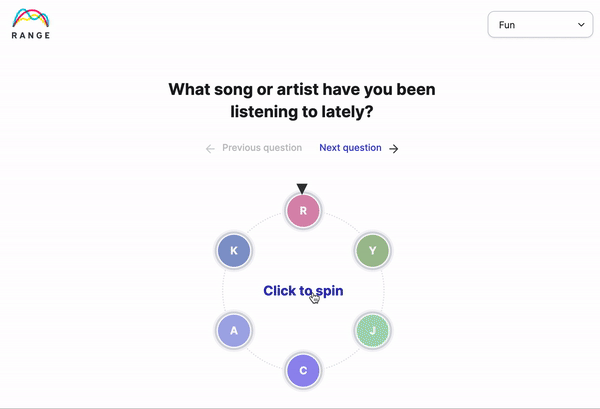
OKRs reign supreme when it comes to helping team plan and measure success. They’re a tried and true method that’s been around since the 70s, and has revolutionized the way companies like Google, Microsoft, and Apple do business.
While there are plenty of other goal-setting methodologies out there, OKRs remain fan favorite for good reason.
“OKRs have helped lead us to 10x growth, many times over. They've helped make our crazily bold mission of "organizing the world's information" perhaps even achievable. They've kept me and the rest of the company on time and on track when it mattered the most." — Larry Page, former CEO of Alphabet and co-founder of Google
Done right, they can bring unprecedented levels of innovation and growth to your team too.
In this article, we’ll dig into everything you need to know about OKRs and share real-life OKR examples for all types of teams to get you started on your own journey.
What are OKRs?
OKRs are a goal-setting methodology created by Intel leader Andy Grove and championed by his mentee John Doerr.
The O stands for objective and the KR stands for key results. OKRs can be used by companies, teams, and individuals to drive ambitious outcomes with greater focus.
OKRs help teams:
- Align on what’s most important
- Rally behind a small set of carefully chosen priorities
- Set measurable milestones for how to achieve goals
- Track progress and know when to shift gears
- Build greater autonomy, ownership, and accountability
- Innovate more than the competition
Who should use OKRs?
Grove created OKRs after observing that teams do their best work when they’re focused on driving specific results—not endless busywork. They’re meant to be for everyone within an org, from CEO to intern.
They’re especially powerful at companies focused on growth, who are looking for new ways to innovate, outshine competitors, and execute more efficiently.
“As a company, as a business, as entrepreneurs, we need to be focused on the outcomes we want, what we can learn, and what changes we can make to succeed.” — Mike Wu, former CTO, VSCO
How do OKRs work?
OKRs represent your company or team’s focus, not the totality of work. They’re a guide used to direct effort.
At the most basic level, here’s how the framework looks in action.
- Objective: What you want to accomplish
- Key results: 3-5 measurable ways you’re going to get there
To write effective OKRs, it’s important to understand how each of these components works on a slightly deeper level.
The objective
Objectives are the high-level goals you’re trying to achieve. They’re typically anchored to your organization’s values and mission, and help provide focus and guidance as to what top-level priorities are at any given time.
Strong objectives are:
- Moonshot goals that are bold and aspirational (success shouldn’t be a given)
- Action-oriented and concrete
- Few in number, think 5 or less
Some examples of objectives:
- Increase international customer base
- Increase recurring revenue
- Scale system performance
- Foster a more inclusive company culture
- Improve cross-team communication
“OKRs are really ambitious. They're things that are not easy to achieve. They're not sales targets. They're not quotas. They're big, hairy, audacious things that you want to force everyone to aim for, knowing that it's outside their comfort range.” — Ken Norton, Senior Operating Partner at GV (formerly Google Ventures)
The key results
Each objective should have 3-5 key results. These are your milestones and benchmarks—they explain how you’ll work towards your moonshot objective with clear, measurable outcomes. Each key result should have one designated owner responsible for its delivery.
Strong key results are:
- Critical to the success of your objective
- Aggressive, but achievable
- Measurable and time bound—your time frame can either be written into the result itself or implied based on how often you review results (i.e. quarterly)
- Black and white—you either meet the requirements for success or you don’t
Some examples of key results:
- Increase checkout flow conversions by 40%
- Attend 3 networking events this quarter
- Write and publish 1 blog post per week
- Present research findings at Q3 company all-hands
- Build 5 email templates for the marketing team
OKR dos and don’ts
Here are a few more guidelines to get the most out of your OKRs.
- ✅ Keep it simple: Experts say organizations should have a maximum of 5 objectives with 3-5 key results each
- ✅ Keep it short: Each objective and key result should fit on one line
- ✅ Be aspirational: Your objectives should represent a moon shot or “North Star”, not something you know you can achieve
- ❌ Be overly prescriptive: OKRs should lay out the “what” and “why”, but not the “how.” Execution is up for teams and individuals to decide
- ❌ Include everything: OKRs are not an exhaustive to-do list or product roadmap — they’re meant to define success at the highest level, not every single activity
“[OKRs] requires a kind of rigor and discipline about saying these are the most important things that are going on in the organization. It’s not the sum total of tasks. It’s not the work order for the enterprise. It’s whatever we as a team agree deserves special attention, and it really matters.” – John Doerr, Harvard Business Review
Are OKRs for teams or individuals?
Short answer: both. But depending on different factors within your team or company, you might structure things a bit differently.
Here are two examples of how that might look.
Cascading OKRs example
With cascading OKRs, the company sets its OKRs first. The KRs from the company-level objectives then become team-level objectives, and the KRs from the team-level objectives become individual objectives. This approach is helpful because it puts someone on the hook at every level—and prevents duplicative work. It's a common approach at larger companies.
Company
Objective: Become the leading travel booking company in the world
- Key result: Increase booking conversions from 35% to 50%
- Key result: Increase brand visibility by 50%
- Key result: Achieve an NPS score of 65
- Key result: Open 2 international offices this year
Product team
Objective: Increase booking conversions from 35% to 50%
- KR: Launch new mobile app by Q3
- KR: Conduct user research in 3 target markets
- KR: Decrease latency by 50%
Product researcher
Objective: Conduct user research in 3 target markets
- KR: Hold UserTesting sessions with 50 users
- KR: Conduct in-person interviews with 15 users
- KR: Present findings at July All-hands
Top-down, bottoms up OKR example
With the top-down, bottoms-up approach—OKRs are set at the company level and shared so the whole team knows top-level priorities. Individuals and teams also create their own OKRs with this approach, but they don’t have to ladder up quite so strictly.
When team members can see the goals and key results they should be shooting for, they can be more creative about how they go about achieving results.
Company
Objective: Become the leading travel booking company in the world
- KR: Get 500,000 new bookings
- KR: Increase brand visibility by 50%
- KR: Achieve an NPS score of 65
- KR: Open 2 international offices this year
Individual
Objective: Generate 50,000 new social media followers
- KR: Launch partner campaign with 2 influencers
- KR: Post on Twitter 3x per week
- KR: Get exec leaders to share content on LinkedIn twice this quarter
In this example, the individual believes that increasing their social media following will have a positive impact on the company-level initiative related to brand visibility. Their OKR is shaped by the company’s, but not directly cascaded from it.
“High-functioning teams thrive on a creative tension between top-down and bottom-up goal setting, a mix of aligned and unaligned OKRs.” – John Doerr, Measure What Matters
Example OKRs by team
OKRs can help with alignment, focus, and execution at all kinds of companies and on any type of teams. They work well for personal goals too, and can even be used by teams and ICs to align when they’re not used at the company-level.
Company OKR examples
Objective: Grow annual recurring revenue (ARR)
- KR: Generate $600,000 in new ARR
- KR: Expand to 3 new markets
- KR: Decrease churn by 40%
Objective: Build a loyal customer base
- KR: Launch a rewards program
- KR: Reach an NPS score of 70
- KR: Launch 4 new product features based on customer feedback
Product OKR examples
Objective: Build a world-class product that users love
- KR: Launch 2 new, competitive features
- KR: Hire 3 user researchers to bring the user voice into our work
- KR: Dedicate the whole team to a week long bug bash
Objective: Launch new app update
- KR: Design and build 2 new features
- KR: Incorporate 3 learnings from user research
- KR: Have less than 2 bugs per feature in QA
Sales OKR examples
Objective: Hit our 2022 business target
- KR: Close 20% of pipeline generated by opportunities
- KR: Sell $200,000 in new business
Objective: Generate pipeline
- KR: Create 100 opportunities worth $1 million in ARR
- KR: Send 1,000 cold emails
- KR: Make 500 cold calls
Marketing OKR examples
Objective: Build positive brand awareness
- KR: Hire social media and PR leads to promote our brand externally
- KR: Launch partner campaigns with 3 related brands
- KR: Land 2 guest posts in large news or blog outlets
Objective: Launch a widely attended industry conference
- KR: Secure budget and venue by Q1
- KR: Recruit 4 external thought leaders to speak
- KR: Launch ad campaign that reaches 3,000 potential attendees
Customer support OKR examples
Objective: Decrease customer churn
- KR: Build out a tailored support program for enterprise customers
- KR: Kick-off monthly team trainings on new product features
- KR: Interview 20 recently churned customers
Objective: Expand support coverage to Hindi and Chinese
- KR: Localize top 25 help center articles
- KR: Hire 15 native speakers for each language for phone support
- KR: Scope internal translation tool that would support both languages
Personal OKR examples
Objective: Get promoted to a management position
- KR: Mentor 2 summer interns
- KR: Complete leadership training program
- KR: Shadow a leader on the team 2x per month
Objective: PR in the Chicago half marathon next year
- KR: Run 5x week, 40 minutes minimum
- KR: Strength train 2x week
- KR: Decrease mile speed by 5 seconds each week
“If you’re at an early-stage company where you haven’t yet found product-market fit, I recommend creating hypothesis OKRs. Write something you think might be true, set key results that will indicate if it’s true, and give it 6-12 weeks to prove or disprove.” — Christina Wodtke, author of Radical Focus and lecturer at Stanford University
How to set and follow-up on OKRs for your team
Most teams set OKRs quarterly, but that’s not a hard and fast rule. Annual OKRs or half OKRs (every 6 months) are also fairly common.
No matter your cadence, it’s important to kick off the process with a solid planning session. Here, you’ll align on your top priorities (the objectives) and come up with key results at the team level.
Example agenda for an OKR planning session
- Set the scene: Overview of how the meeting will be structured and ground rules for participation.
- Start with an icebreaker: Quick introductions and a team-building question to break the ice and get creative juices flowing.

No sign-up required
Try our (free) icebreaker generator
Take a spin! Start your next meeting with one of these icebreaker questions. It works the same way in Range.
- Review your company mission: Ground yourselves in your company mission, vision, and any company-level OKRs to help guide brainstorm and discussion.
- Set 3 objectives: Avoid getting overly bogged down in the details by focusing only on your objectives first.
- Brainstorm: If your objectives aren’t predetermined by a cascading system, start with a whole-team brainstorm on what your moon shot goals should be. Cast a wide net—there are no right or wrong answers at this phase. It’s all about capturing ideas.
- Prioritize: Pick 3 objectives from your brainstorm that will become your team’s top priorities—this might necessitate discussion and debate, but it’s worth it as you make team-level commitments. Deciding what you won’t focus on together is just as important as deciding what you will.
- Add key results: Next, for each objective, you’ll hone in on 3-5 key results. The process will mirror what you did for objectives—first brainstorm, then prioritize. For this phase, don’t worry about adding specific numbers to your key results. Just use placeholders.
- Decide on key result values: Once you’ve prioritized your key results, look across everything you’ve committed to and add realistic targets with the full set in mind.
- Assign owners: Each objective and key result should have a clear owner responsible for its outcome. That’s not to say others won’t work on it throughout the quarter. Having a clear owner though makes sure someone’s accountable when it comes to the end result.
- Closing round: End with a check out round where everyone shares how they’re feeling — this can be about the commitments made, the process, emotions, or anything else.
“The idea that people will throw up their arms and say ‘I tried, and I just can’t write my OKRs’ is completely logical. It’s normal and often the reality. There’s no shortcut. You’re going to have to give OKRs the attention they deserve and invest in them.”— Andrew Beebe, Managing Director, Obvious Ventures
Review OKRs on a regular basis
Establishing a way to track progress toward your OKRs is critical to the process. Too often OKRs are created, then left in a spreadsheet to be checked on only at the end of the quarter. At this point, there’s not much more to do than grade them and move on, which hinders the learning process.
When it comes to actually making progress, connecting your OKRs to daily actions is key. According to Stanford psychologist Kelly McGonigal, taking small daily steps that are in line with your goals is one of the best (research-backed) ways to drive results over time.
⭐️ Tracking your OKRs in a tool like Range helps keep them front and center every day, without adding unnecessary processes to the mix.
⚡️ Try this OKR check-in meeting template.
Reflecting on progress at the end of a quarter or cycle is also crucial. Taking time to go through a retrospective, which includes grading your OKRs, will help you and your team improve how you write your goals and objectives, and how you identify the best metrics with which to measure key results.
When you miss an OKR, hold yourself and your team accountable but don’t focus on blaming. Address when this happens, uncover what can be learned, consider whether or not you set the right objective, and then work to achieve the clarity you need to achieve success in the next cycle.
How to master OKRs with Range
With Range Goals, OKRs are easier and more intuitive for teams to manage. They’re meant to help organizations avoid the “create and forget” trap, while also being simple to track so they become part of the regular cadence of communication.
Why teams use Range for OKRs
- Simple, intuitive workflow to set up and update OKR progress regularly
- Automatic reminders keep objective owners on top of regular status updates, and send them out to the right stakeholders via email or Slack
- Daily check-ins provide focus, and keep OKRs and alignment top of mind
- Automatically pull OKR status to your meeting agendas to keep everyone aligned with zero overhead
- Hierarchical structure allows individual and team-level goals to ladder up into company goals seamlessly
⭐️ No separate OKR spreadsheet or sending a goal update email
⚡️ Range makes it easy for your team to make (and share) progress on goals while they work. Get started now.
OKR FAQs
What’s the difference between goals and OKRs?
Well, it depends who you ask. There are many different frameworks out there for tracking team progress and outcomes — OKRs are one of them. In the OKR framework, goals are broader and more long term than objectives. They give you the overarching direction for your business plan and define where you want to be in the future.
The right goal will align with your company vision, purpose, and long-term aspirations. You might use goals in your yearly and quarterly company strategy, in your positioning, mission statement, company culture guide, financial projections, and other crucial business documents and initiatives.
A goal establishes a desired outcome. An individual company goal is a broad statement; it is large in size and intangible, so it’s harder to measure than an OKR.
What’s the difference between OKRs and KPIs?
KPI stands for key performance indicator—they’re standalone metrics that measure the health of your business. OKRs help direct effort and work, while KPIs measure how you’re doing in one particular area. They can actually be complementary to OKRs, because KPIs typically make good key results.








